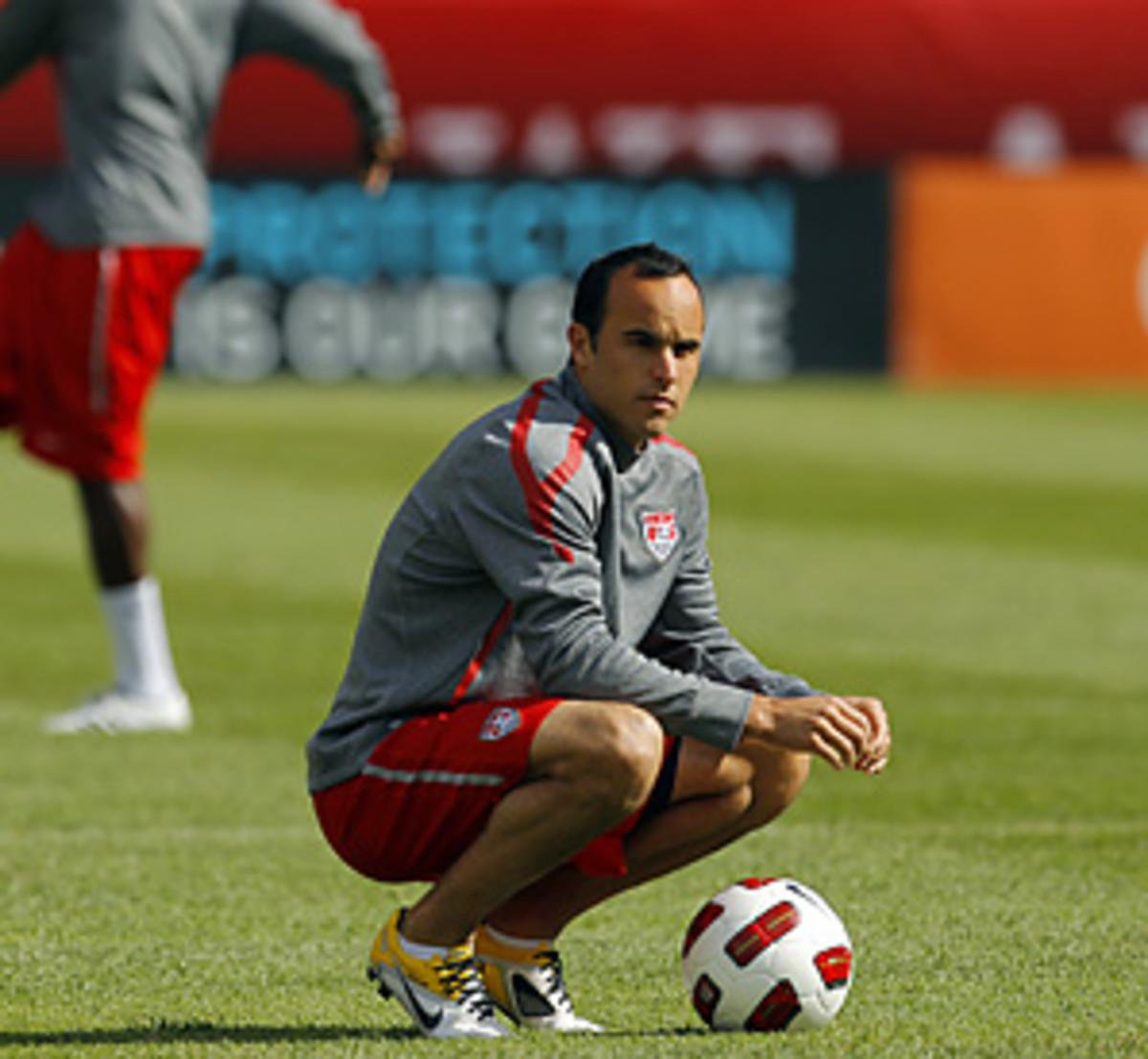Klinsmann needs to overhaul U.S. soccer's grassroots development
Just moments after he was officially announced as the new head coach of the U.S. men's national team this week, Jurgen Klinsmann told a lie.
When asked how he would fix the American team, he answered:
"I don't think there's anything wrong with the team. They lost a Gold Cup final against a very, very good Mexico team that over the last couple of years became one of the top 10 teams in the world."
You'll have to forgive Klinsmann for being disingenuous. If there wasn't something wrong with the U.S. team he wouldn't have been sitting at the Nike store in midtown Manhattan answering questions.
And his answer to that particular question was proof and declaration of what's wrong with the U.S. team. While Mexico -- a team that could reasonably be called the United States' equal a few years back -- has quickly evolved into one of the globe's top teams, the Americans have become stagnant. The Mexican resurgence has been fueled by dazzling young players.
In contrast, the best player on the national team is the same guy who was the best player on the national team a decade ago: Landon Donovan. (Or, if you want to argue for Clint Dempsey, change the phrasing to one of the two best players on the national team. Either way it's unacceptable.)
Where are the top American prospects? Are there any? While fired coach Bob Bradley did little too inspire anyone with his style or demeanor, he also had precious little to work with in terms of promising young players.
So it isn't just the coach that needed changing. It's the American system and approach -- a process that isn't developing enough top prospects, either quickly or creatively.
The heart of the problem is an American system that relies too heavily on well-to-do upper middle class kids whose families can afford to pay exorbitant fees to play for club soccer and travel teams -- amounting to several thousand dollars a year. Those club programs get their players on paths into the Olympic Development Program and youth national teams and into top regional tournaments. There they are exposed to collegiate coaches and then continue their track into the ACC or the Pac-10, which aren't exactly like the FC Barcelona youth system.
You can argue -- as many have -- that the best American athletes are never going to play soccer. That might be partially true, but not sports dogma. Our population has changed too rapidly to make such 20th century assumptions hold fast, while soccer continues to grow in visibility and resources in this country.
The problem is less a question of what sport an athlete chooses than providing access to an underserved, under-recruited, unnoticed group of athletes. An invisible group that isn't being tapped.
Klinsmann, who lives in Southern California, obviously has spent a lot of time thinking about the issue. And his answers about what the youth programs of America should be were more forthcoming than his assessment of the current state of the U.S. team.
"The youth teams should reflect again the mixture of cultures. It should reflect what's going on in this country," Klinsmann said. "There's so much influence from the Latin environment over the last 15-20 years, that also has to be reflected in the U.S. national team."
Klinsmann said he wants to tap into America's "melting pot" and find a style that reflects the culture of this country. He's learned a lot during his years of living in the U.S.: about the push for college, about the rigid youth system, about the lack of pickup soccer or hours of kicking a ball around outside of an organized practice.
"It doesn't matter how he plays, with his dad or with his buddies in the street, this will show later on with his technical abilities, with his passing, with his instinct on the field," Klinsmann said of his hypothetical player. "I think that's certainly an area where a lot of work is ahead of us."
Our athletes play in organized, regimented club systems that give them a certain amount of technical ability but little creativity or fluidity and our soccer style reflects that.
While there have been strides in youth development it still remains an entrenched pay-to-play system run by youth coaches that are making a decent living. Can you turn back the clock to a simpler system of banging the ball around the neighborhood, where nobody is getting paid to supervise?
Klinsmann has his work cut out for him. How much authority U.S. Soccer president Sunil Gulati cedes to Klinsmann remains to be seen. Gulati called the issue of a control "a bit of a red herring."
But what isn't a red herring is the fact that something needs to be fixed. That waiting a decade to discover the next best American is too long. That the U.S. is a second tier soccer country.
"We have a ways to go still to break into the top 10 in the world," Klinsmann said. "We need to be realistic that we are not belonging there right now. Not yet."
Now that is the truth.






